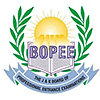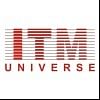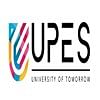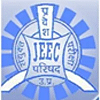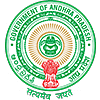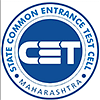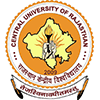
Table of Contents
JKCET syllabus 2025 includes all the topics that the candidates need to prepare for JKCET 2025 exam. It would help the candidates if they go through the syllabus and get an insight into JKCET 2025 exam pattern. The candidates must download the syllabus and start their preparation.
JKCET Syllabus 2025 for Physics
There are 20 units in physics, with each unit having some subtopics. The physics syllabus is given in an elaborate format below.
Unit 1: Physical World & Measurement
S.I. units, Fundamental and derived units. Accuracy and precision of measuring instruments, Errors in measurement, Significant figures. Dimensions of Physical quantities, dimensional analysis, and its applications.
Unit 2: Kinematics
Motion in a straight line: Position-time graph, speed, and velocity. Elementary concepts of differentiation and integration for describing motion. Uniform and non-uniform motion, average speed and instantaneous velocity. Uniformly accelerated motion, velocity-time graph, position-time graphs, relations for uniformly accelerated motion, (graphical treatment and calculus approach). Scalar and Vector quantities, addition and subtraction of vectors, general Vector and notation, Relative Velocity. Scalar and Vector products of two vectors with properties, Unit Vector, Resolution of a Vector in-plane rectangular components, Motion in a plane, Projectile Motion.
Unit 3: Laws of Motion
Concept of force and Inertia, Newton’s First Law of motion; Momentum and Newton’s Second Law of motion, Impulse; Newton’s Third Law of motion. Law of conversation of linear momentum and its applications, Equilibrium of concurrent forces. Friction, static and kinetic friction, laws of friction, rolling friction. Dynamics of uniform circular motion: Centripetal force and examples of circular motion (vehicle on level circular road, vehicle on the banked road.)
Unit 4: Work, Energy, & Power
Concept of scalar products of vectors, Work done by a constant force and variable force; kinetic energy, work-energy theorem, power. Potential energy, Potential energy of spring, conservative forces, conservation of mechanical energy (K.E. and P.E.), non-conservative forces; Elastic and inelastic collisions in one and two dimensions.
Unit 5: Motion of System of Particles & Rigid Body
Centre of mass of a two-particle system, Centre of mass of a rigid body; Concepts of the vector product of vectors: a moment of a force, torque, angular momentum, conservation of angular momentum with some examples. Moment of inertia, the radius of gyration. Values of the moment of inertia for simple geometric objects (no derivation), statement of parallel and perpendicular axes theorems and their applications.Rigid body rotation and equations of rotational motion.
Unit 6: Gravitation
The universal law of gravitation. Acceleration due to gravity and its variation with altitude, depth and shape, Kepler’s laws of planetary motion. Gravitational potential; gravitational potential energy. Escape velocity. Orbital velocity of a satellite. Geo-stationary satellites.
Unit 7: Properties of Bulk Matter
Elastic behaviour, Stress-strain relationship. Hooke’s Law, Young’s modulus, bulk modulus, shear modulus of rigidity. Pressure due to a fluid column; Pascal’s law and its applications (hydraulic lift and hydraulic brakes) Viscosity, Stokes’ law, terminal velocity, streamline and turbulent flow, Reynolds number. Bernoulli’s theorem and its applications Surface energy and surface tension, angle of contact, applications of surface tension – ideas to drops, bubbles and capillary rise. Heat, temperature, thermal expansion; specific heat, calorimetry; change of state-latent heat. Heat transfer-conduction, convection and radiation, Newton’s law of cooling.
Unit 8: Thermodynamics
Thermal equilibrium and definition of temperature (zeroth law of thermodynamics),. Heat work and internal energy. The first law of thermodynamics. The second law of thermodynamics: is reversible and irreversible processes. Heat engines and refrigerators (concept only)
Unit 9: Behaviour of Perfect Gas & Kinetic Theory
Equation of state of a perfect gas, work done on compressing a gas. Kinetic theory of gases – assumptions, the concept of pressure. Kinetic energy and temperature: RMS speed of gas molecules; Degrees of freedom, Law of equipartition of energy (statement only) and applications to specific heat capacities of gases; the concept of Mean free path, Avagadro’s number.
Unit 10: Oscillations and Waves
Periodic motion – Period, frequency, displacement as a function of time. Periodic functions. Simple harmonic motion (S.H.M.) and its equation; phase; oscillations of a spring-restoring force and force constant; energy in S.H.M. – Kinetic and potential energies; Simple pendulum-derivation of expression for its period; Free, forced and damped oscillations, resonance. Wave motion. Longitudinal and transverse waves are the speed of a wave. Displacement relation for a progressive wave. Principle of superposition of waves, a reflection of waves, Standing waves in strings and organ pipes, fundamental mode and harmonics, Beats, Doppler effect.
Unit 11: Electrostatics
Electric charges: Conservation of charge, Coulomb’s law-forces between two-point charges, forces between multiple charges; superposition principle and continuous charge distribution. Electric field: Electric field due to a point charge, Electric field lines, Electric dipole, Electric field due to a dipole, Torque on a dipole in a uniform electric field. Electric flux, a statement of Gauss’s theorem and its applications to find field due to infinitely long straight wire, uniformly charged infinite plane sheet and uniformly charged thin spherical shell (field inside and outside). Electric potential, electric potential due to a point charge, a dipole and system of charges; Equipotential surfaces, Electrical potential energy of a system of two point charges and electric dipole in an electrostatic field. Conductors and insulators, Dielectrics and electric polarization, capacitor and capacitance, a combination of capacitors in series and parallel, capacitance of parallel plate capacitor with and without dielectric medium between the plates, Energy stored in a capacitor. Van de Graff generator.
Unit 12: Current Electricity
Electric current, Drift velocity, Ohm’s law, Electrical resistance, V-I characteristics (linear & non-linear), Electrical energy and power, Electrical resistivity and conductivity, Carbon resistors, Colour code for carbon resistors; Temperature dependence of resistance. The internal resistance of a cell, potential difference and emf of a cell, and combination of cells in series and parallel. Kirchhoff’s laws and their applications. Wheatstone bridge, Metre bridge. Potentiometer – principle and its application to measure the potential difference and for comparing e.m.f. of two cells; measurement of internal resistance of a cell.
Unit 13: Magnetic Effects of Current & Magnetism
Biot – Savart law and its application to current carrying circular loop. Ampere’s law and its applications to infinitely long current carrying straight wire, straight and toroidal solenoids. Force on moving charge in uniform magnetic and electric fields. Cyclotron. Force on a current-carrying conductor in a uniform magnetic field. The force between two parallel current carrying conductors-definition of ampere. Torque experienced by a current loop in a uniform magnetic field; Moving coil galvanometer, its current sensitivity and conversion with examples. Current loop as a magnetic dipole and its magnetic dipole moment, magnetic field lines; Earth’s magnetic field and magnetic elements. Para-, dia- and ferromagnetic substances with examples. Electromagnets and factors affecting their strength, permanent magnets.
Unit 14: Electromagnetic Induction & Alt. Currents
Electromagnetic induction: Faraday’s law, induced emf and current; Lenz’s Law. Eddy currents. Self and mutual inductance. Alternating currents, peak and RMS value of alternating current/voltage; reactance and impedance; LC oscillations (qualitative treatment only) & LCR circuits series, resonance; power in AC circuits, wattles current. AC generators and transformers.
Unit 15: Electromagnetic Waves
Electromagnetic waves and their characteristics. Transverse nature of electromagnetic waves. Electromagnetic spectrum (radio waves, microwaves, infrared, visible, ultraviolet, Xrays, gamma rays) including elementary facts about their uses.
Unit 16: Optics
Ray Optics-Reflection of light, spherical mirrors, mirror formula, refraction of light-Total internal reflection and its applications, Refraction at spherical surfaces, lenses, thin lens formula, Lens-makers Formula, Magnification, Power of a Lens. Combination of thin lenses in contact, Microscope and Astronomical Telescope (reflecting and refracting) and their magnifying powers. Wave optics: wavefront and Huygens’ principle, reflection and refraction of plane wave at a plane surface using wavefronts. Proofs of laws of reflection and refraction using Huygens's principle. Interferences, Young’s double-slit experiment and expression for fringe width, coherent sources and sustained interference of light. Diffraction due to a single slit, width of central maximum. Resolving power of microscopes and astronomical telescopes, Polarisation, plane polarized light; Brewster’s law uses of plane-polarized light and Polaroid’s.
Unit 17: Dual Nature of Matter & Radiation
Dual nature of radiation. Photoelectric effect, Hertz and Lenard’s observations; Einstein’s photoelectric equation; particle nature of light. Matter waves-wave nature of particle, de Broglie relation. Davisson-Germer experiment.
Unit 18: Atoms & Nuclei
Alpha-particle scattering experiment; Rutherford’s model of atom; Bohr’s model of atom, energy levels, hydrogen spectrum. Composition and size of nucleus, atomic masses, isotopes, isobars; isotones. Radioactivity-alpha, beta and gamma particles/rays and their properties; radioactive decay law. Mass-energy relation, mass defect; binding energy per nucleon and its variation with mass number, nuclear fission and fusion.
Unit 19: Electronic Devices
Quantitative ideas on Energy bands in solids, conductors, insulators, and semiconductors. Semiconductors; Semiconductor diode: I-V characteristics in forward and reverse bias; diode as a rectifier; I-V characteristics of LED, photodiode, solar cell and Zener diode; Zener diode as a voltage regulator. Junction transistor and its action, characteristics of a transistor; transistor as an amplifier (common emitter configuration) and oscillator. Logic gates (OR, AND, NOT) concept of NAND and NOR gates. Transistor as a switch.
Unit 20: Communication System
Basic elements of communication system (block diagram only), Bandwidth of signals (speech, TV and digital data); Bandwidth of Transmission medium, Propagation of electromagnetic waves in the atmosphere, sky and space wave propagation. Need for modulation: Production and detection of an amplitude modulated wave.
JKCET Syllabus 2025 for Chemistry
There are 20 units in chemistry, with each unit having some subtopics. Chemistry syllabus is given in an elaborate format below.
Unit 1: Chemical Arithmetic & Atomic Structure
Laws of chemical combination, Mole concept (numerical) Percentage composition, Chemical reactions, Stoichiometry and calculations based on stoichiometry. Atomic structure: - Bohr’s model of the Hydrogen atom, Quantum numbers, Pauli’s exclusion principle, Hund’s rule and Aufbau principle. Heisenberg’s uncertainty principle, de-Broglie wave equation and its significance.
Unit 2: Chemical Equilibrium
Law of mass action, Le-Chatelier’s principle, and its application to physical and chemical equilibria. Ionisation of weak electrolytes (Ostwald’s dilution law) Acids and bases: Acid-base equilibria. Bronsted-Lowry and Lewis's concept, of acids and bases. Ionic product of water. pH and pOH scales, pKa&pKb values, Solubility product, Buffer solutions Common ion effect, Hydrolysis of salts
Unit 3: Chemical Kinetics
Rate of chemical reaction, Average and instantaneous rate, Factors affecting the rate of reaction, Order and molecularity of reaction, Integrated rate equation and Half-life period (for zero and first-order) reaction, Activation energy and Arrhenius equation.
Unit 4: Solutions
Vapour pressure, Raoult’s law, Ideal and Non-ideal solutions, Colligative properties. Determination of the molecular mass of non-volatile solutes through colligative properties. Abnormal molecular masses and Van’t Hoff Factor.
Unit 5: Chemical Thermodynamics
Energy changes take place during chemical reactions, Internal Energy and Enthalpy changes, Enthalpy of combustion, Solution and Neutralization. Hess’s Law (Numerical problems) Laws of thermodynamics-first, second & third, Concepts of Entropy and Free energy, Spontaneity of a chemical reaction and Thermodynamic equilibrium.
Unit 6: REDOX Reactions & Electrochemistry
Dependence of electrode and cell potential on concentration (Nernst Equation), Electrode potential as a criterion for product formation in electrolysis. E.M.F. of Galvanic cell, Relationship between free energy change and E.M.F. of a cell. Definition and units of Equivalent, Molar, and Specific conductivity.
Unit 7: Solid State & States of Matter
Boyle’s Law, Charle’s law, Dalton’s law of partial pressure, Graham’s law of diffusion of gases. Causes of deviation from ideal behaviour, ideal gas equation and nature of ‘R’, Vander Waal’s equation, surface tension and viscosity of liquids. Crystalline and amorphous solids, Crystal lattice, Crystal types, Packing efficiency, calculation of density of unit cell, Number of atoms per unit cell in a cubic cell. Coordination number, Stoichiometric defects: Schottky, Frenkel and interstitial. Properties of solids: Electrical, Magnetic & Dielectric.
Unit 8: Surface Chemistry
Freundlich Adsorption isotherm, preparation of colloidal solutions by a physical and chemical method. Electrical properties (cataphoresis, electroosmosis, coagulation, and protective colloids) Homogeneous and Heterogeneous Catalysis.
Unit 9: Periodic Properties
Classification of elements as s, p, d, and f block elements. Variation of Ionization energy, Electron affinity, Electronegativity, Atomic and Ionic radii along the period and down the group in the periodic table.
Unit 10: Chemical Bonding & Molecular Structure
Types of chemical bonds, Ionic & covalent bonds, Bond parameters, Quantum theory of covalent bond, pi and sigma bonds, Hybridization involving s, p and d-orbitals, Dipole moments and hydrogen bond. VSEPR: Shapes of simple molecules ( H2O, NH3, SO2, CO2, PCl3, PCl5, CIF3, BF3, SF4, XeF2, XeF4 ). Molecular orbital theory: Energy Levels and M.O. diagrams of H2, H2 +, He2, O2,O1- 2, O2 2-& F2. Bond order and its significance.
Unit 11: Chemistry of Representative Elements
S and P Block Elements: Electron configuration, Oxidation states, and trends in various properties like ionization energy, electron affinity, atomic radii, electronegativity, and diagonal relationship.
Alkali metals: Hydration of ions, action with ammonia, flame colouration, the solubility of hydroxides, carbonates, and sulphates.
Alkaline Earth Metals: Solubility of carbonates, hydroxides, and sulphates.
Boron Family: Structure of halides, relative acid strength of trihalides of boron.
Carbon family: Hydrides and oxides.
Nitrogen family: Oxides of Nitrogen and Phosphorous, reducing nature, basic strength and boiling points of their halides.
Oxygen family: volatility, thermal stability, acid character, reducing character and bond angles of their hydrides, oxyacids of sulphur.
Halogen family: Bond energy, color, and oxidizing power, boiling point, acid strength and dipole moment, thermal stability, reducing the power of hydracids, relative acidity and oxidizing power of oxyacids of halogens.
Unit 12: Transition Elements Including Lanthanides
Electron configuration, Oxidation states, Colour, and Magnetic properties. Oxides of Vanadium, Chromium and Manganese Alloys of Copper, Silver, and Iron. Metallurgy of Iron, Copper, and Zinc.
Unit 13: Co-ordination Chemistry
Introduction, Ligands, Co-ordination Number, IUPAC Nomenclature. Bonding theories: Werner’s, VBT and CFT. Isomerism in Co-ordination compounds (Ionization, Linkage, Hydrate, Geometrical and Optical). Applications of Co-ordination complexes in Biology, Medicine and Analytical Chemistry.
Unit 14: Nomenclature and Basic Concepts Inorganic Chemistry
Nomenclature of organic compounds (monofunctional and polyfunctional groups), inductive, electrometric resonance and hyperconjugation effects, reaction intermediates, carbocations, carbanions and free radicals with their general stability order, types of organic reactions (addition, substitution, elimination and redox reactions), aromaticity based on Huckel rule. Ortho, meta, and para directing groups.
Unit 15: Hydrocarbons
Structural isomerism in alkanes, alkenes, alkynes and arenes, stereoisomerism: geometrical and optical isomerism, chirality, the origin of chirality, specific rotation, racemization and resolution, conformations in ethane and cyclohexane, relative configuration (D, L Nomenclature), absolute (R and S system of nomenclature).
Unit 16: Organic Chemistry Based on Functional Group-I
Haloalkanes, haloarenes, alcohols and phenols: General methods of preparation and properties. Chloroform and Iodoform.
Unit 17: Organic Chemistry Based on Function Group-II
Ethers, Aldehydes, Ketones, Monocarboxylic acids: General methods of preparation and properties. Derivatives of monocarboxylic acids like acid halides, acid anhydrides acid amides and esters. The relative strength of carboxylic acids
Unit 18: Organic Chemistry Based on Functional Group-III
Cyanides, Isocyanides, Nitrocompounds, and Amines: General methods of preparation and properties. The relative basic character of amines.
Unit 19: Molecules of Life
Carbohydrates: Definition, Classification, Mutarotation, Structure of Animo-acids, Peptides and Proteins (Molish and ninhydrin tests). Classification and uses of vitamins. Chemicals in medicine and healthcare, Dyes and drugs. Chemical reactions in the atmosphere, ozone depletion, and its effects. Acid rain, Green House effect & Global warming.
Unit 20: Polymers
Introduction, Classification, Methods of Polymerisation (Addition, Condensation, Free Radical, Cationic & Anionic). Natural & Synthetic Polymers: Polythene, Nylon, Polyester, Bakelite, and Rubber. Biodegradable and Non-Biodegradable Polymers.
JKCET Syllabus 2025 for Mathematics
There are 3 units in Mathematics, with each unit having some subtopics. The mathematics syllabus is given in an elaborate format below.
Unit 1: Sets, Relations, & Functions
Sets and their representation, finite and infinite sets, empty set subsets, subsets of real numbers especially intervals, power sets, and universal sets. Venn diagram, union and intersection of sets. Difference of sets, Complement of a set. Ordered pairs, Cartesian product of sets, number of elements in the Cartesian product of two finite sets. Relations, Domain, codomain and range of
Relation, types of relations, reflexive, symmetric, transitive and equivalence relations.
Functions as special kinds of relations from one set to another, domain, co-domain and range of a function. One to one, onto functions. Real valued functions of the real variable; constant, identity, polynomial, rational, modulus, signum and the greatest integer functions with their graphs. Sum, difference, product and quotients of functions. Composition of functions, the inverse of a function, binary operations.
Unit 2: Complex Number; Linear Inequation; Linear Programming
Complex number: Conjugate of a complex number, modulus and amplitude (argument) of a complex number, Argand’s plane and polar representation of complex numbers, algebraic properties of complex numbers. Fundamental theorem of algebra, solution of Quadratic equation in the complex number system. The square root of a complex number. Linear inequation: Algebraic solution of linear inequalities in one variable and two variables. Linear programming: Introduction, the definition of related terminology such as constraints, objective function, optimization, different type of linear programming problem (L.P), mathematical formulation of L.P problem, graphical method of solution for problems in two variables, feasible and infeasible regions, feasible and infeasible solutions, optimal feasible solutions.
Unit 3: Sequence & Series, Permutation & Combination & Binomial Theorem
Sequence and series: Arithmetic progression (A.P), arithmetic mean (A.M), nth term, sum to n-terms of an A.P, Geometric progression (G.P), Geometric Mean (G.M), nth term, sum to n terms and sum to infinity of a G.P. Relation between A.M and G.M. Sum to n terms of
